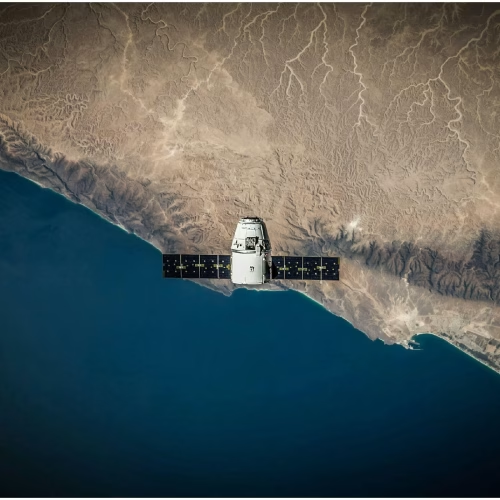Environmental issues of the current time include this problem as one of the most significant sources of environmental strain. Human civilization produces greater than 300 million tons of plastic each year. It is a very useful material. The recycling levels of this substance stay limited. The landfill receives ninety-one percent of dumped plastic waste products. The ocean becomes polluted by plastic, which also causes injuries to sea creatures. Biodegradable polymer technology provides an effective solution to manage this problem.
The current environmental priority period makes biodegradable polymers a promising choice to serve as replacements for conventional plastics. Biodegradable polymers break down into water, carbon dioxide and biomass. Regular plastics act as environmental hazards over hundreds of years, but biodegradable polymers help dispose of plastic waste materials. Biodegradable polymers are used to improve human lifestyles. This blog explores fascinating aspects of biodegradable polymer technology. The text explains both its significance and how it is used in daily life.
What are Biodegradable Polymers?

Biodegradable polymers consist of natural materials that decompose into harmless products. Biodegradable polymers can be found in various products, including disposable utensils and packaging and medical materials. People prefer them because they help the environment, and companies use them to reduce waste. At tech fairs and local craft shops, Bioplastics, along with other items made from degradable polymers, are often available. Design is an environmentally friendly practice by its hardware implementations.
Biodegradable polymers originate from renewable plant materials. Biodegradable polymers draw their origin from plant-based starches and natural sugars. The production process follows basic steps that result in effective outcomes. Harmful waste turns into safe natural substances when biodegradable polymers interact with air, water or soil. The classification of biodegradable polymers exists in two primary forms.
1. Natural Polymers
They are obtained from plant starch or cellulose-based films that originated from the cell walls of plants. These are usually abundantly available in nature and cheap.
- Examples:
- Starch-based packaging: Used for food containers and loose-fill packaging.
- Cellulose-based films: Used in packaging and as coatings.
- Protein-based materials: like those made from soy or whey, used in films and packaging.
2. Synthetic Polymers
Human beings create these materials, which will degrade naturally over time. PLA serves as a synthetic polymer fabrication material attributed to fermented plant starch, which finds applications in 3D printing and packaging. Polycaprolactone (PCL) serves medical purposes as one of the synthetic polymers. These materials have undergone recent developments that allow their production from reusable materials.
Here’s a quick comparison of these two main categories:
| Type | Examples | Source | Applications |
|---|---|---|---|
| Natural Polymers | Starch, Cellulose, Chitin | Derived from plants/animals | Food packaging, agricultural films, textiles |
| Synthetic Polymers | PLA (Polylactic Acid), PHA (Polyhydroxyalkanoates) | Derived from biochemicals | Medical sutures, electronics, disposable items |
Chemical Composition
Biodegradable polymers contain special structures that allow chemical or enzymatic breakdown processes. The synthetic polymer PLA (Polylactic acid) begins as plant-based fermented starch and functions as a widely popular material. In industrial composting facilities, PLA decomposes without producing harmful contaminant waste products. The polymers known as PHA (polyhydroxyalkanoates) form naturally. Microorganisms create these materials as a natural result of metabolism during plant oil and sugar digestion sessions.
Role of Biodegradable Polymers in Sustainable Development
The future sustainability requires biodegradable polymers. The world deals with three major issues: plastic waste problems, climate change effects and resource scarcity. These materials, then, are helpful for the environment and create incentives for conservation.
Environmental Impact

Plastic items that use ordinary materials need hundreds of years to decompose, thus causing environmental delinquency that increases with each passing year. The proper environmental conditions make biodegradable plastic degrade within a timeframe of a few months. PLA plastic participates in decomposition processes through special composting facilities, where breakdown occurs between 3 and 4 months. Normal plastic requires more than 400 years to decompose entirely.
Biodegradable alternatives offer an exciting choice for the food packaging industry. They help cut down on ocean and landfill waste. This is achieved by substituting single-use plastics with eco-friendly alternatives. Biodegradable packaging is a potential solution. It could decrease plastic waste by approximately 80%. This is based on research from 2022.
Working with Sustainable Development Goals
The United Nations Sustainable Development Goals directly affect biodegradable polymers.
- SDG 12: Responsible Consumption and Production
These materials support environmentally responsible production approaches as well as sustainable waste disposal systems. - SDG 13: Climate Action
Reduced greenhouse gas release from decomposing bodies helps fighting global warming. - SDG 14: Life Below Water
Organizations that reduce plastic waste can both stop ocean pollutants and defend ocean habitats.
The development of biodegradable polymers for worldwide systems brings us nearer to attaining sustainability as a global standard.
Circular Economy and Biodegradable Polymers

Design for reuse, recycling or safe return to the environment is intended for all materials in a circular economy. Here, biodegradable polymers perfectly fit into the framework, offering compostable options and closing the cycle of waste. Take, for instance:
- Biodegradable plastic packaging allows various food waste items to be composted together, which results in nutrient-rich soil.
- Agricultural films break down directly in fields, so farmers cut both cleaning expenses and waste generation.
These examples show that biodegradable polymers convert unusable waste into valuable resources.
Daily Tech Solutions Using Biodegradable Polymer Technology
This includes biodegradable polymers from gadgets to healthcare, where every day technology is taking a sustainable turn. Biodegradable polymers offer functionality while being eco-friendly, and this directly proves that technology and sustainability can coexist.
Electronics and Devices
Degradable polymers have begun to work their way into consumer electronic devices during the manufacturing process. As an example:
- Biodegradable Phone Cases: Brands like Pela offer cases that uses plant based materials, these materials decompose after few months of disposal.
- Eco-Friendly Circuit Boards: Scientists are working on exploring the polymers that could replace traditional epoxy resins in electronic circuits.
These technologies prduce the products that are minimal to environmental impact.
Health Care Uses
Biodegradable polymer technology creates positive changes in healthcare industry.
- Biodegradable Sutures: These substances dissolve naturally in the body.
- Drug Delivery Systems: Polymers like PCL (polycaprolactone) are used in capsules offer controlled release of the drug.
- Temporary Implants: Surgical devices like stents made from biodegradable materials remove the need for secondary surgery.
The solutions offer better healthcare services while decreasing medical waste.
Food Packaging
The packaging of food and its storage techniques get revolutionized using biodegradable polymers. Examples include:
- PLA-based containers along with wrappers that break down inside industrial composting systems.
- Chitosan-based edible films serve as a wasteless option because they derive from crustacean shells.
In 2022, many of the big food brands made use of sustainable packaging materials that reduced their plastic consumption.
Clothes and Fabrics
The fashion industry starts using biodegradable polymers to develop sustainable developments.
- Biodegradable Fabrics: Natural decomposition occurs for materials like PHA-based fibers, as opposed to polyester and nylon.
- 3D-Printed Accessories: Designers use PLA to develop green biodegradable accessories and footwear products.
Once biodegradable polymers are integrated, these industries show yet again how sustainability is a must and not a fashion whim.

Problems and Limits
Biodegradable polymers have enormous potential. Multiple barriers prevent the large-scale utilization of these polymers. The full exploitation of their potential requires resolution of the existing challenges.
- Higher Production Costs: Pricing for biodegradable plastics in today’s world is exorbitantly higher than that of the traditional plastics. The salient point is in terms of the economics because renewable materials will cost extra, and hence the entire cost of production increases. Experts say that unique production techniques also increase direct hampering costs. As a result, the usage of biodegradable materials is avoided.
- Trade-Offs in Performance: These plastic substitute types sometimes show weak strength and shorter longevity in comparison to conventional plastic materials. The combination of sensitivity to heat and liquid exposure reduces their usage possibilities to specific locations.
- Scalability Concerns: The production of biodegradable plastics depends significantly on farming three main crop types: corn, sugar cane and potatoes. Biodegradable plastic crops might face market competition as production increases, which might endanger food supplies and regular consumer prices.
Biodegradable polymers are limited because they have environmental benefits but face the same technical constraints as electric cars. You will understand the necessity for advanced research. Financial backing is also crucial to tackle the current challenges preventing better performance of these polymers.
New Ideas and Future Views for Biodegradable Polymer Technology

Research shows that biodegradable polymer technology shows favorable trends for future development. Scientists work dedicatedly to develop superior capacities within their research field. The industrial sector pursues ways to grow their operations.
- Advanced Material Engineering: Scientists are working on new polymer blends. Blends that combine natural biodegradability with the strength and versatility of synthetic polymers. For example, adding nanoparticles to biodegradable polymers increases their mechanical properties and expands their application areas.
- Waste-to-Polymer Solutions: Biodegradable polymer production benefits from using agricultural and industrial waste materials. The dual advantage of this method includes both food security independence and better waste management solutions.
- Self-Healing Polymers: Advancements in scientific research involve the development of polymers that heal themselves while decomposing naturally. The materials can be repaired themselves without sacrificing environmental benefits.
Future Trends Overview
| Innovation | Potential Impact |
|---|---|
| Nanotechnology integration | Improved strength and performance |
| Use of waste as feedstock | Reduced dependency on food resources |
| Self-healing properties | Longer lifespan of polymer-based products |
Biodegradable polymers already promise the revolutionized field of packaging and consumer goods. Their potential markets have become many sectors, including healthcare, construction and electronics. The future looks very bright, and this clearly underlines their potential role in giving strength to sustainability.
Conclusion
Biodegradable polymer technology is an excellent idea. They offer a very real solution to plastic waste problems. From everyday packaging to new, innovative medical uses, these materials cover a huge range of areas. Biodegradable polymers represent essential components in sustainable future development efforts. They reduce our carbon footprint. Support recycling. And reduce pollution with minor plastics.
Besides, we can choose products from biodegradable plastics. Strive to have more efficient composting systems, then share information on the topic. Let’s build that future together.




